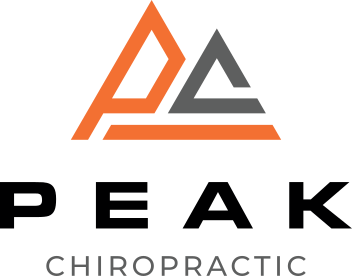If you've ever experienced back pain, you know how debilitating it can be. Understanding how spinal adjustments can provide relief might be the key to reclaiming your comfort. These adjustments target spinal alignment, potentially easing nerve pressure and inflammation. Many find that after a few sessions, their mobility improves considerably. But how exactly do these adjustments work, and what can you expect during treatment? Exploring these questions can shed light on a path towards relief that many overlook.
What Is Back Pain?
Back pain commonly affects many people at some point in their lives. It's a condition that can vary widely in intensity, from a dull ache to sharp, debilitating pain. You might experience it in your lower back, upper back, or even in your neck. The discomfort can make simple tasks, like bending down or lifting objects, feel challenging.
Understanding what back pain is can help you address it more effectively. Fundamentally, it's a symptom rather than a standalone condition. It often arises from a range of factors, including muscle strain, poor posture, or even stress. You may notice that your back pain comes and goes, depending on your activity levels or even your mental state.
When you think about back pain, consider how it impacts your daily routine. It can limit your mobility and affect your overall quality of life. You might find yourself avoiding activities you once enjoyed, leading to a cycle of decreased physical activity and increased discomfort.
Recognizing the signs and symptoms of back pain is important. If you're experiencing persistent discomfort, it's necessary to pay attention to your body's signals. Your back plays an essential role in your overall health, so taking care of it should be a priority.
Causes of Back Pain
Understanding the causes of back pain can help you pinpoint the source of your discomfort. Several factors can contribute to your back pain, and identifying them is vital for effective relief. One common cause is poor posture. If you spend hours hunched over a computer or slouched on the couch, your spine can become misaligned, leading to strain and pain.
Inactivity or a sedentary lifestyle can also wreak havoc on your back. When your muscles weaken due to lack of exercise, they can't support your spine effectively, increasing the risk of injury.
On the other hand, overexertion from heavy lifting or sudden movements can cause muscle strains or sprains. It's important to lift properly and avoid twisting your body while carrying weight.
Another significant factor is age. As you get older, the wear and tear on your spine can lead to conditions like arthritis or degenerative disc disease, which can be quite painful.
Additionally, injuries from accidents or falls can result in acute back pain that may linger if not addressed.
Stress also plays a role. When you're stressed, your muscles tense up, which can contribute to discomfort in your back.
Finally, underlying health conditions, like scoliosis or herniated discs, may cause ongoing pain. By understanding these causes, you can take proactive steps to minimize your discomfort and improve your overall back health.
Understanding Spinal Adjustments
Spinal adjustments can play an essential role in alleviating back pain caused by misalignments or tension. When your spine is out of alignment, it can lead to discomfort, restricted movement, and even nerve pain. Understanding spinal adjustments helps you appreciate how this technique can support your overall well-being.
During an adjustment, a trained chiropractor applies controlled force to specific areas of your spine. This action aims to restore proper alignment, enhance mobility, and reduce pain. You might feel a pop or crack during the adjustment, which is normal and often provides immediate relief. Many people report feeling a sense of lightness or relaxation afterward.
It's vital to recognize that spinal adjustments aren't just for those with severe back pain. They can also benefit anyone experiencing minor discomfort or stiffness. Regular adjustments can help maintain spinal health, preventing future issues from developing.
If you lead an active lifestyle or sit at a desk all day, your spine may be subject to stress. Incorporating adjustments into your routine can keep your spine in check.
Before starting any treatment, you'll usually undergo an initial evaluation. This assessment helps your chiropractor understand your specific condition and tailor a treatment plan that suits your needs.
How Adjustments Work
When it comes to how adjustments work, you'll find that the process involves precise techniques designed to realign your spine and enhance its function. Chiropractors use a variety of methods to achieve this, focusing primarily on the vertebrae in your spine. By applying controlled force to specific areas, they help restore proper alignment, which can alleviate pressure on nerves and reduce inflammation.
During your adjustment, you'll typically lie down in a comfortable position. Your chiropractor will assess your spine's alignment and determine the necessary adjustments. With a series of quick, targeted movements, they apply pressure to your spine, often resulting in a popping sound. This sound occurs when gas bubbles in the joint fluid are released, indicating that the joint's mobility has improved.
Adjustments are tailored to your specific needs, and your chiropractor might combine hands-on techniques with tools to achieve the best outcomes. The goal is to enhance your body's natural ability to heal itself. By correcting misalignments, adjustments help improve your overall posture, flexibility, and range of motion.
You might notice immediate relief after an adjustment, but it's important to remember that the healing process often requires multiple sessions. Each adjustment builds upon the last, gradually helping your spine regain ideal function.
Benefits of Spinal Adjustments
Adjustments offer a range of benefits that extend beyond immediate pain relief. When you undergo spinal adjustments, you're not just tackling discomfort; you're also fostering overall wellness.
Here are three key benefits you might experience:
- Improved Mobility: After an adjustment, many people report increased flexibility and range of motion. This can make daily activities easier and more enjoyable, allowing you to move freely without the limitations that back pain often imposes.
- Enhanced Posture: Regular adjustments can help realign your spine, promoting better posture. Good posture reduces strain on your muscles and ligaments, which can lead to less pain in the long run. You might find yourself standing taller and sitting more comfortably throughout your day.
- Stress Reduction: Spinal adjustments can also contribute to lower stress levels. When your body is in alignment, it functions more efficiently, which can lead to a greater sense of relaxation. This holistic benefit can improve not just your physical health but also your mental well-being.
Incorporating spinal adjustments into your routine can lead to long-lasting benefits that enhance your quality of life.
It's crucial to consult a qualified professional who can tailor the adjustments to your specific needs. By prioritizing your spinal health, you're investing in your overall wellness and health.
Effectiveness and Research
Research consistently shows that chiropractic adjustments can be effective in alleviating back pain. Multiple studies have highlighted that individuals receiving chiropractic care often report significant improvements in pain levels and functionality.
You might wonder how this process works. Fundamentally, adjustments aim to restore proper alignment to your spine, which can relieve pressure on nerves and muscles, thereby reducing pain.
One major study published in the "Journal of the American Medical Association" revealed that chiropractic adjustments can be more effective than traditional medical treatments for certain types of back pain, especially when combined with other therapies like exercise. If you've been struggling with chronic pain, you'll be interested to know that many patients experience lasting relief after regular adjustments.
Moreover, a systematic review in "Spine" found that spinal manipulation has a positive effect on both acute and chronic back pain. The findings suggest that individuals who undergo chiropractic care may also experience fewer side effects compared to those who rely on medication.
In addition to pain relief, research indicates that chiropractic adjustments can improve overall function. You may find it easier to perform daily activities after treatment, which can enhance your quality of life.
While individual results can vary, the cumulative evidence supports the effectiveness of chiropractic adjustments for back pain relief. So, if you're considering this approach, know that there's a solid foundation of research validating its benefits.
What to Expect During Treatment
When you start treatment for back pain, you'll undergo an initial assessment to pinpoint your specific issues.
Your chiropractor will then explain the various treatment techniques they'll use to help relieve your pain.
You'll also get a clear timeline on what results to expect and when.
Initial Assessment Process
During your initial assessment, you'll undergo a thorough evaluation to understand the specific nature of your back pain. This process is essential for determining the best approach to your treatment. You can expect your chiropractor to ask a series of questions, perform physical tests, and review your medical history.
Here's what typically happens:
- Detailed Interview: You'll discuss your symptoms, including when they began, their intensity, and any activities that worsen or relieve your pain. This helps pinpoint the root cause.
- Physical Examination: Your chiropractor will conduct a hands-on assessment, checking for tenderness, range of motion, and any abnormalities in your spine or posture. This evaluation aims to identify areas of tension or misalignment.
- Diagnostic Tests: Depending on your situation, the chiropractor might recommend imaging tests like X-rays or MRIs to gather more information about your back condition. These tests provide a clearer picture of what's going on beneath the surface.
Treatment Techniques Overview
Several effective treatment techniques can help alleviate your back pain, and your chiropractor will tailor these methods to your specific needs. During your sessions, you'll likely experience spinal adjustments, which involve gentle manipulations to realign your spine and improve mobility. This technique can reduce pain and enhance overall function.
In addition to adjustments, your chiropractor may incorporate soft tissue therapies. These techniques can relieve muscle tension and improve circulation around the affected areas.
Expect to engage in therapeutic exercises designed to strengthen your core and back muscles, providing additional support and preventing future issues. You might also receive advice on posture and ergonomics to help you maintain a healthy spine in daily activities.
Your chiropractor may suggest lifestyle changes, including stretches or modifications to your work environment, to further support your recovery. Throughout your treatment, communication is key.
Be open about your progress and any discomfort you experience. Your chiropractor will monitor your response to these techniques, making adjustments as needed to guarantee the most effective care.
With consistent treatment, you'll be on your way to a pain-free life, ready to enjoy your daily activities again.
Expected Results Timeline
Understanding the expected results timeline is essential for managing your back pain treatment effectively. As you begin your adjustments, it's important to know that relief won't happen overnight.
Here's what you can typically expect during your treatment journey:
1. Initial Phase (Weeks 1-2): You might experience some discomfort as your body adjusts to the treatment. This is normal, and many patients notice minor improvements in their pain levels during this time.
2. Progressive Phase (Weeks 3-6): As you continue with adjustments, you should start feeling more significant relief. Your mobility may improve, and daily activities can become easier.
Stay consistent with your treatment plan during this phase.
3. Long-Term Phase (Weeks 6+): By this stage, many patients report substantial pain relief and enhanced quality of life. Maintenance adjustments may be recommended to keep your back healthy and prevent future issues.
Tips for Managing Back Pain
Managing back pain effectively starts with incorporating stretching and strengthening exercises into your routine.
You'll also want to focus on proper posture techniques, which can greatly reduce strain on your back.
Stretching and Strengthening Exercises
Incorporating stretching and strengthening exercises into your routine can greatly alleviate back pain.
These exercises not only improve flexibility but also build the core muscles that support your spine.
Here are three key exercises you can start with:
- Cat-Cow Stretch: Get on your hands and knees. Inhale as you arch your back (cow), and exhale as you round it (cat). This helps maintain spinal mobility and reduces tension.
- Bridges: Lie on your back with your knees bent and feet flat. Lift your hips toward the ceiling, squeezing your glutes. This strengthens your lower back and stabilizes the pelvis.
- Plank: Position yourself face down, supporting your weight on your forearms and toes. Keep your body straight and hold for as long as you can. This strengthens your core, which is vital for back support.
Proper Posture Techniques
Maintaining proper posture is essential for preventing and alleviating back pain. When you sit, stand, or move, being mindful of your body alignment can make a significant difference. Start by keeping your shoulders back and relaxed, with your ears aligned over your shoulders. This position allows your spine to maintain its natural curve.
When sitting, choose a chair that provides support. Keep your feet flat on the ground, or use a footrest if needed. Your knees should be at or slightly below hip level. If you're working at a desk, adjust your monitor to eye level to avoid straining your neck.
While standing, distribute your weight evenly between both feet. Avoid locking your knees and try to engage your core to support your spine. If you're lifting something, bend at your hips and knees, keeping the object close to your body.
Remember to take breaks during prolonged periods of sitting or standing. Stand up, stretch, and walk around to keep your muscles active.
Conclusion
To summarize, understanding how spinal adjustments can relieve back pain empowers you to take control of your health. By addressing misalignments and reducing nerve pressure, these adjustments improve not just your pain but also your overall mobility. If you're struggling with back pain, consider exploring chiropractic care as a proactive option. With tailored treatment plans and ongoing assessments, you can find effective relief and promote long-term spinal health for a more active, pain-free life.



